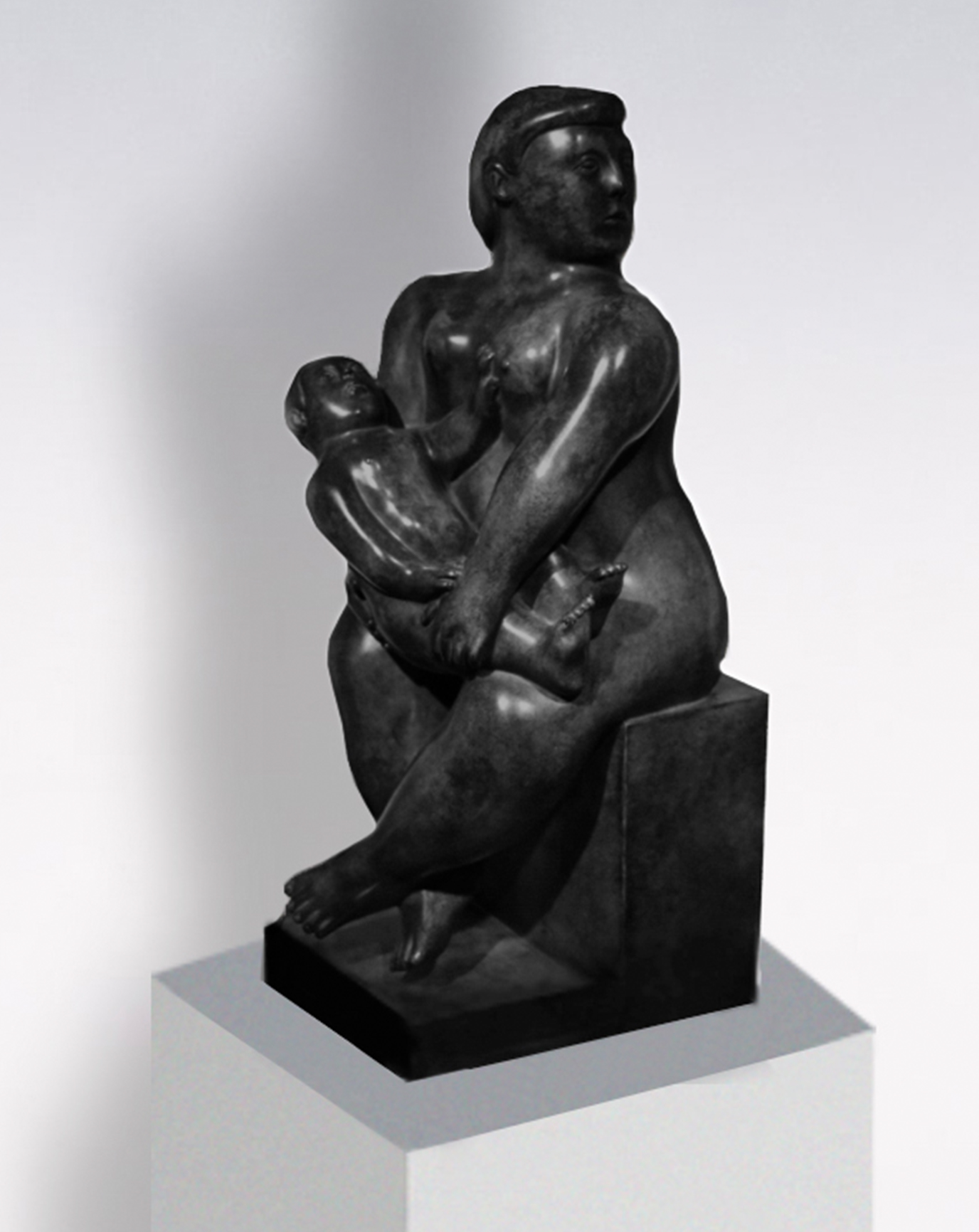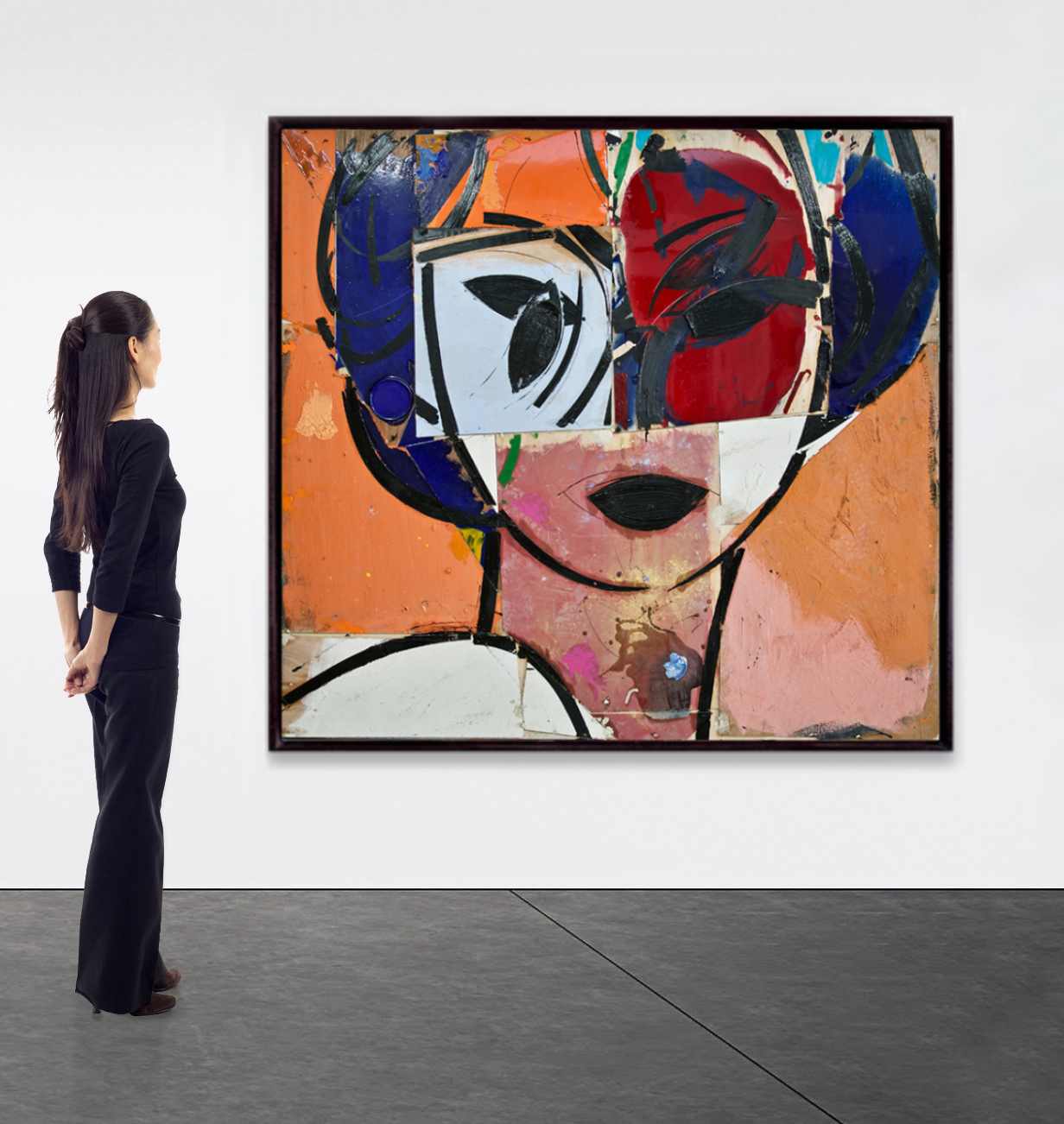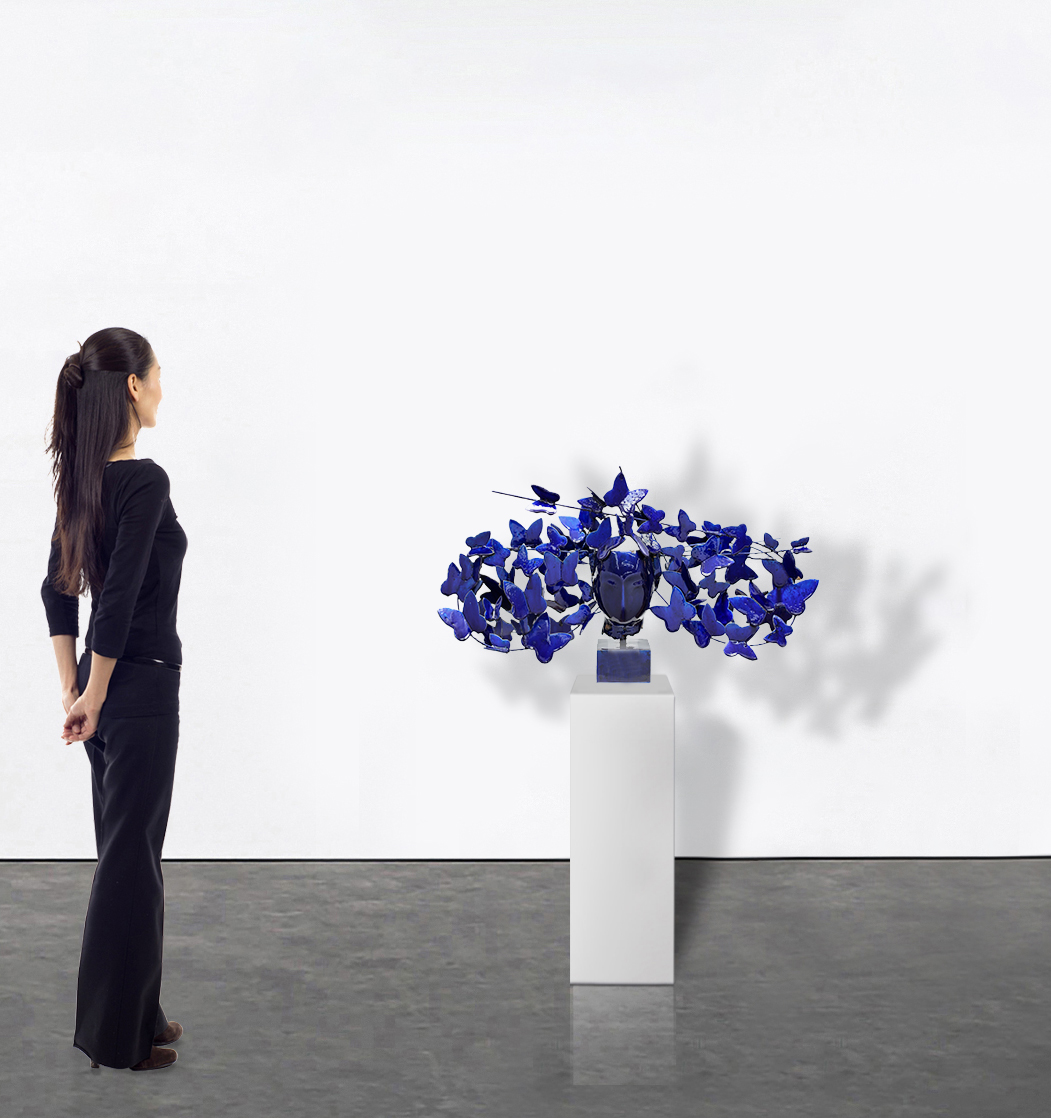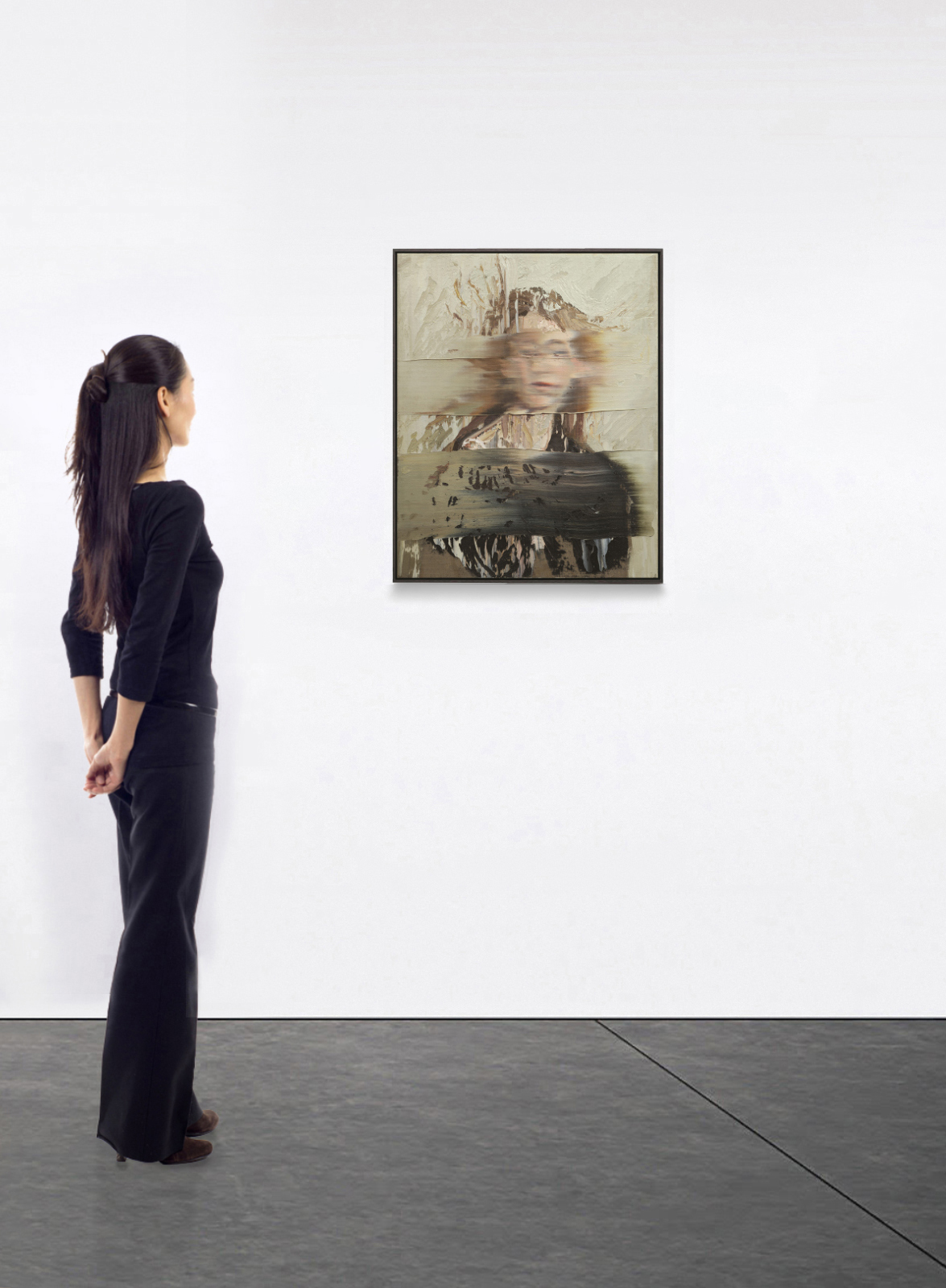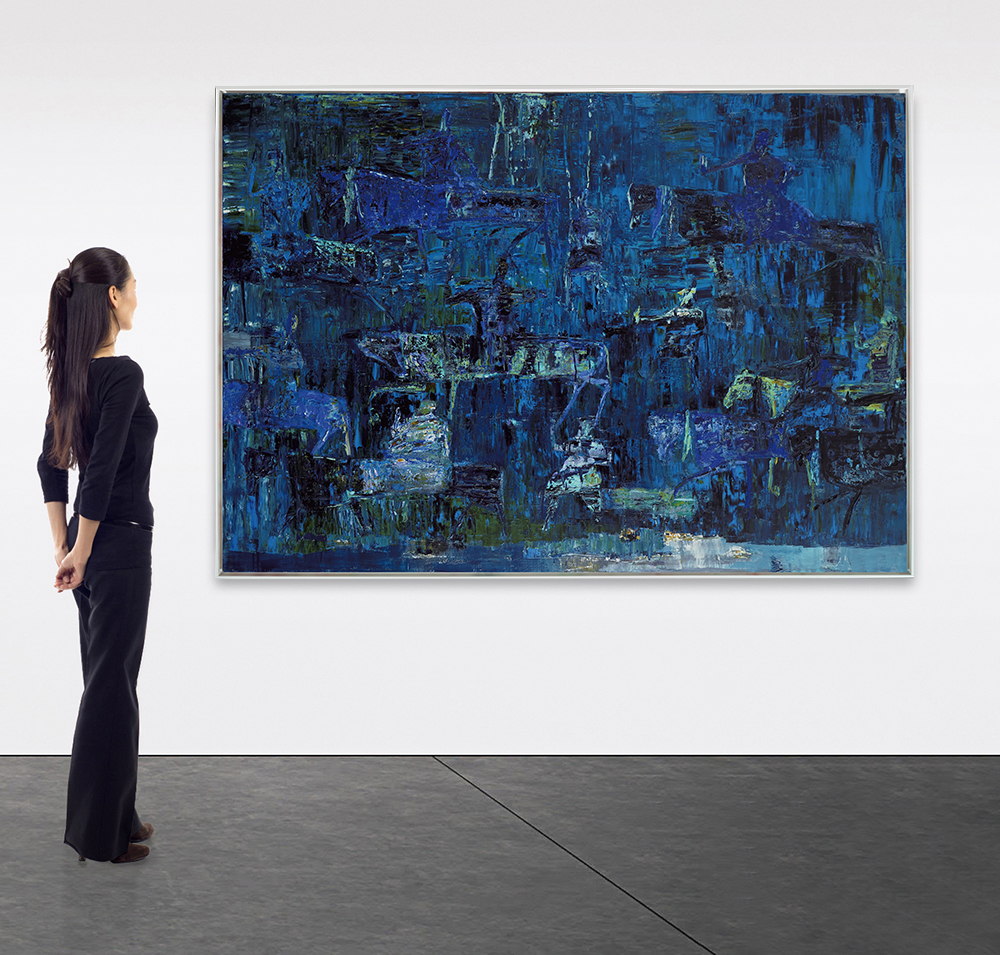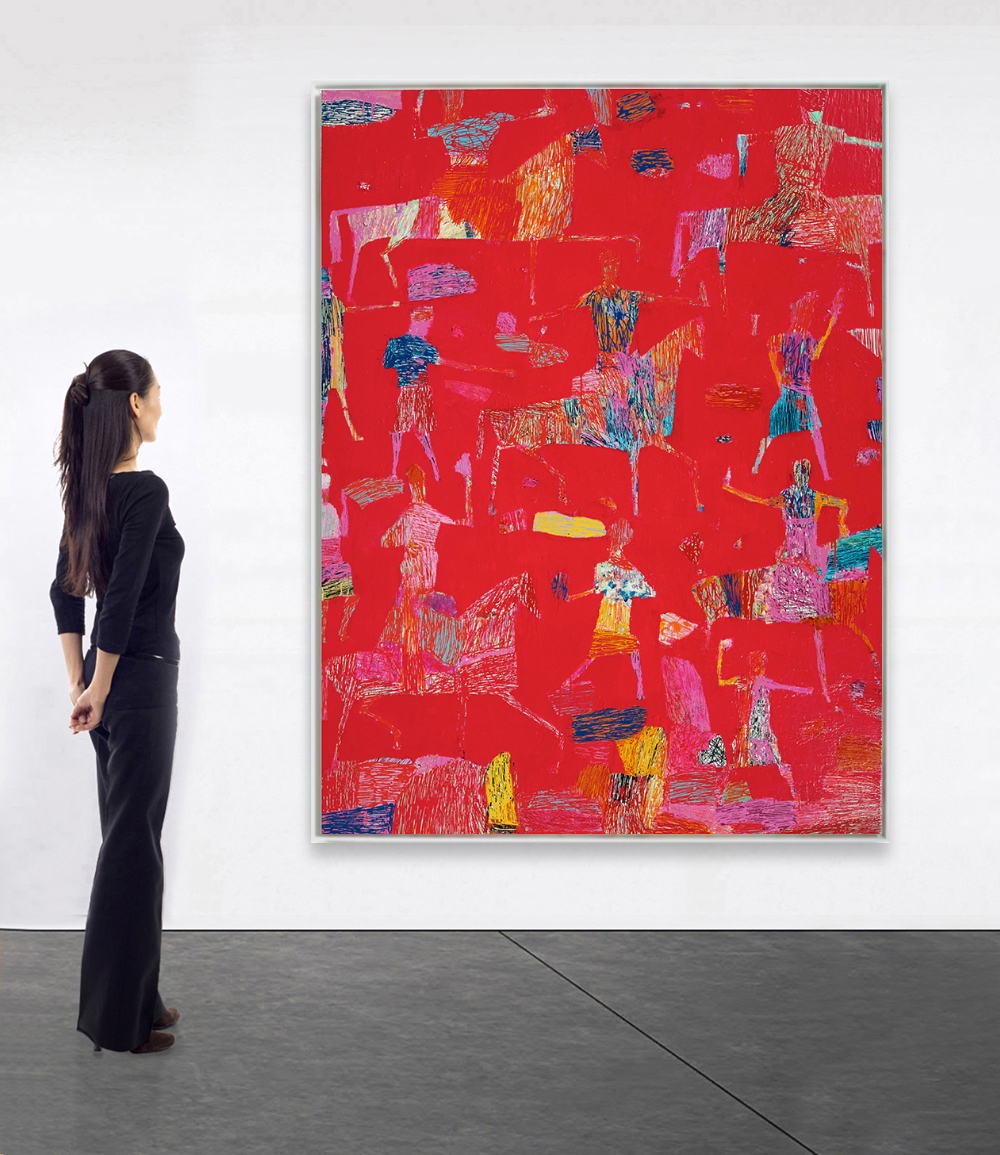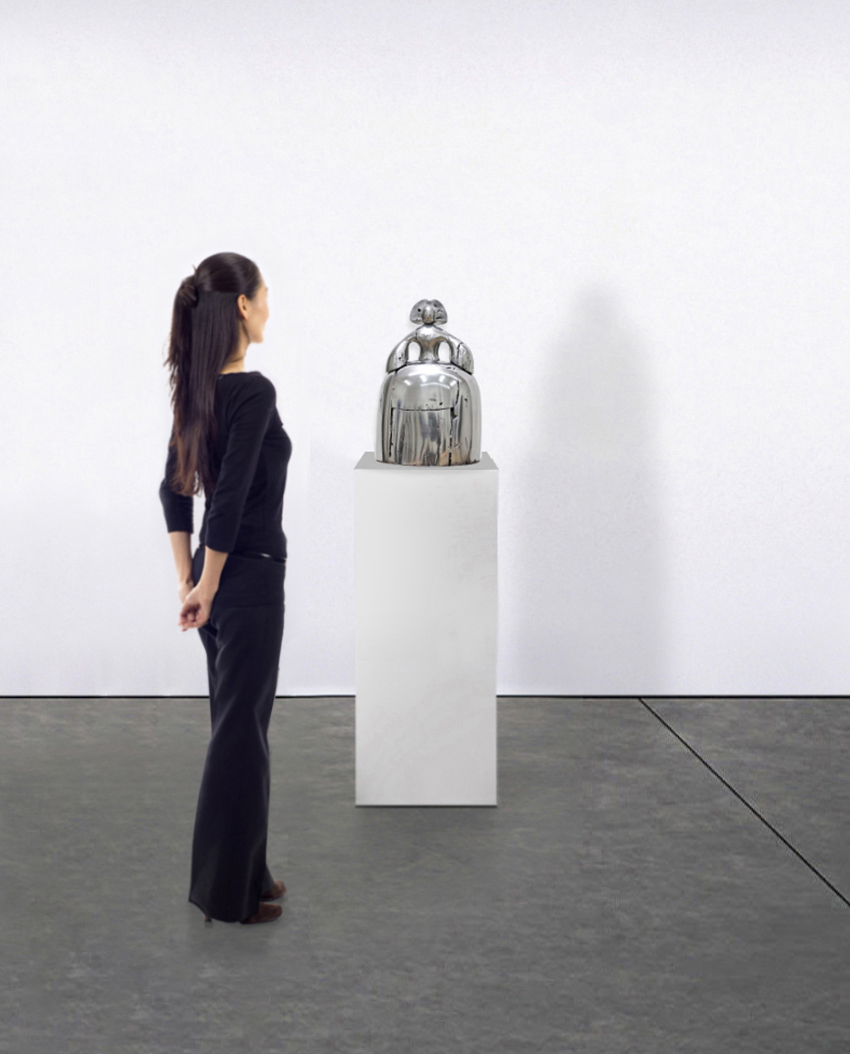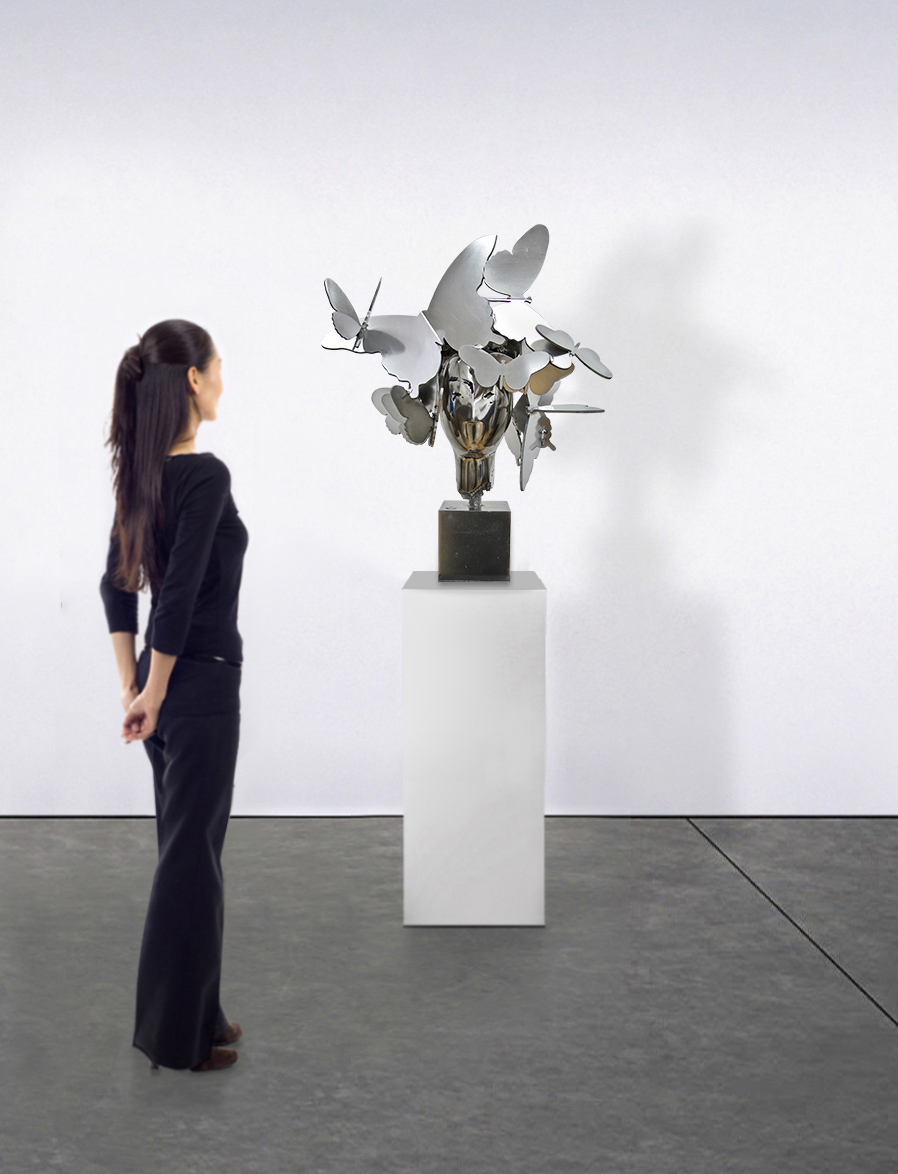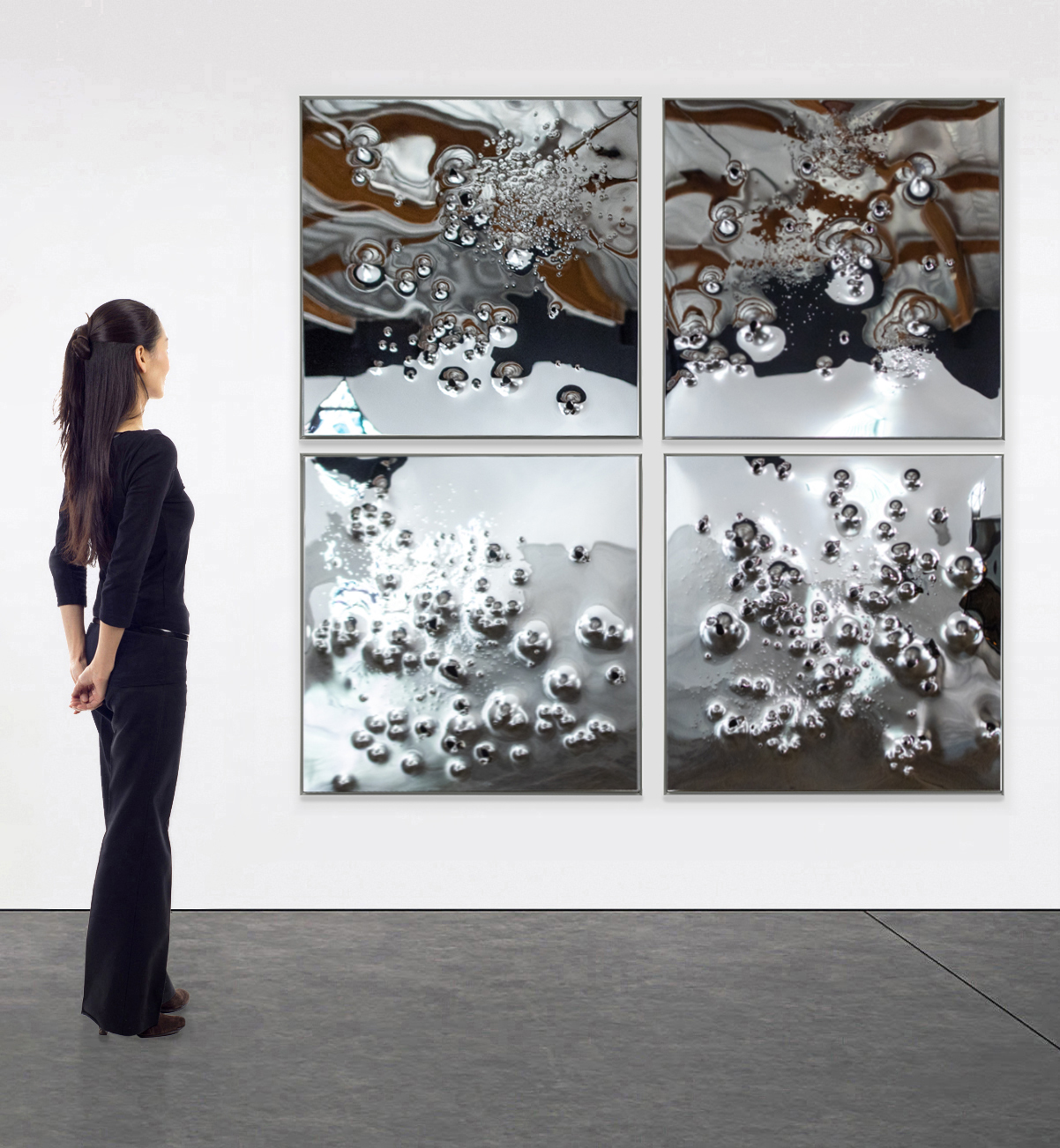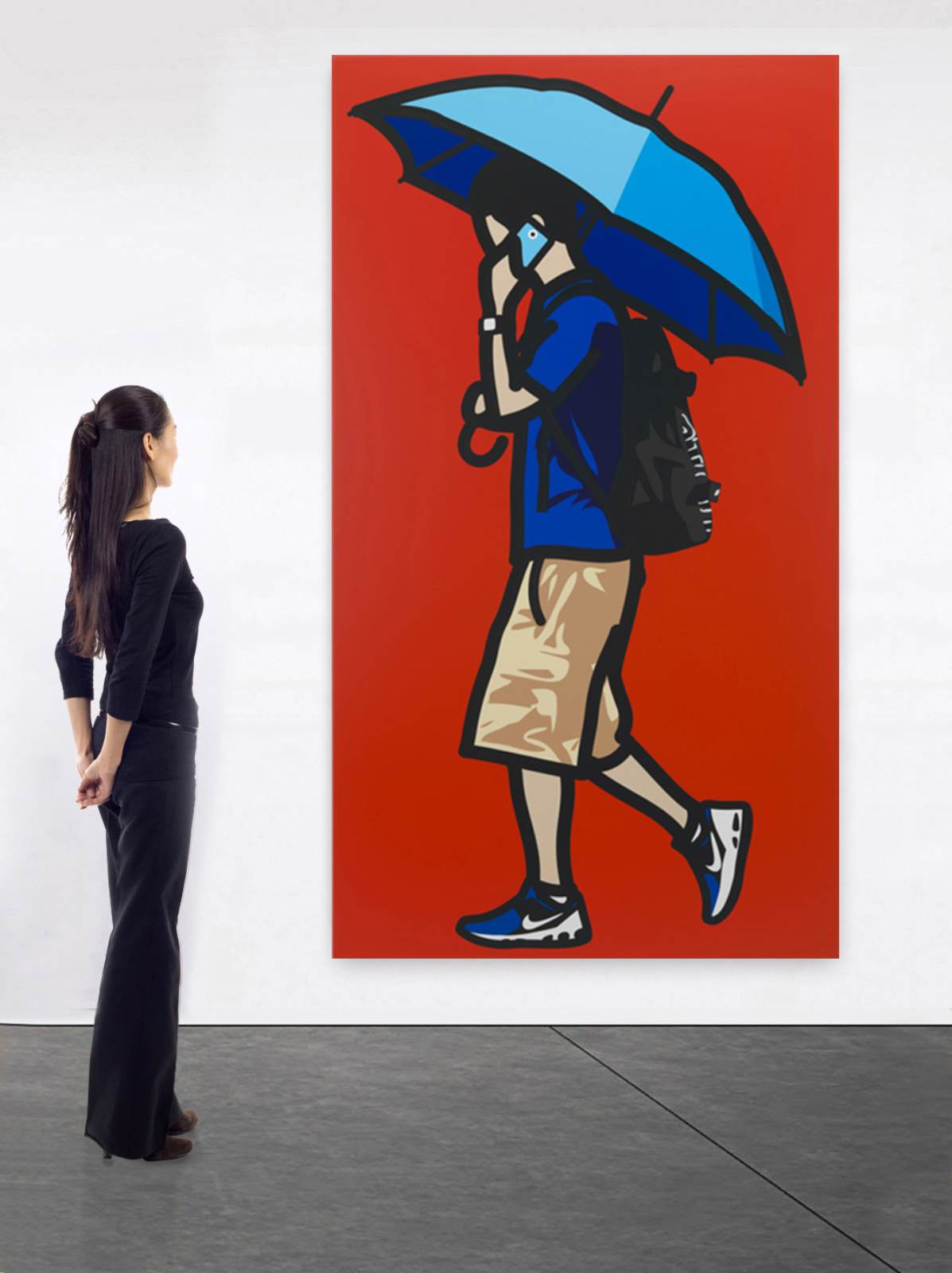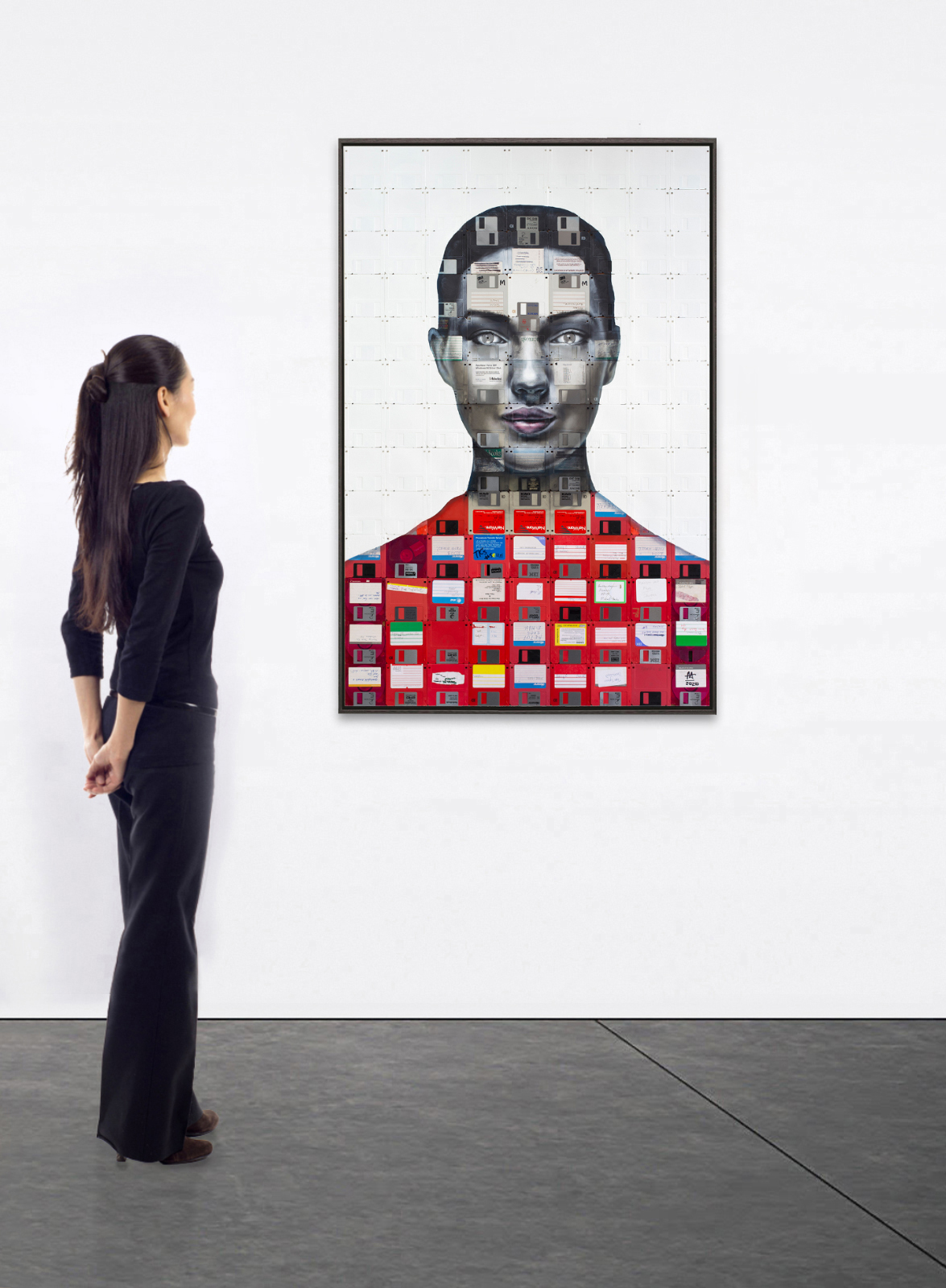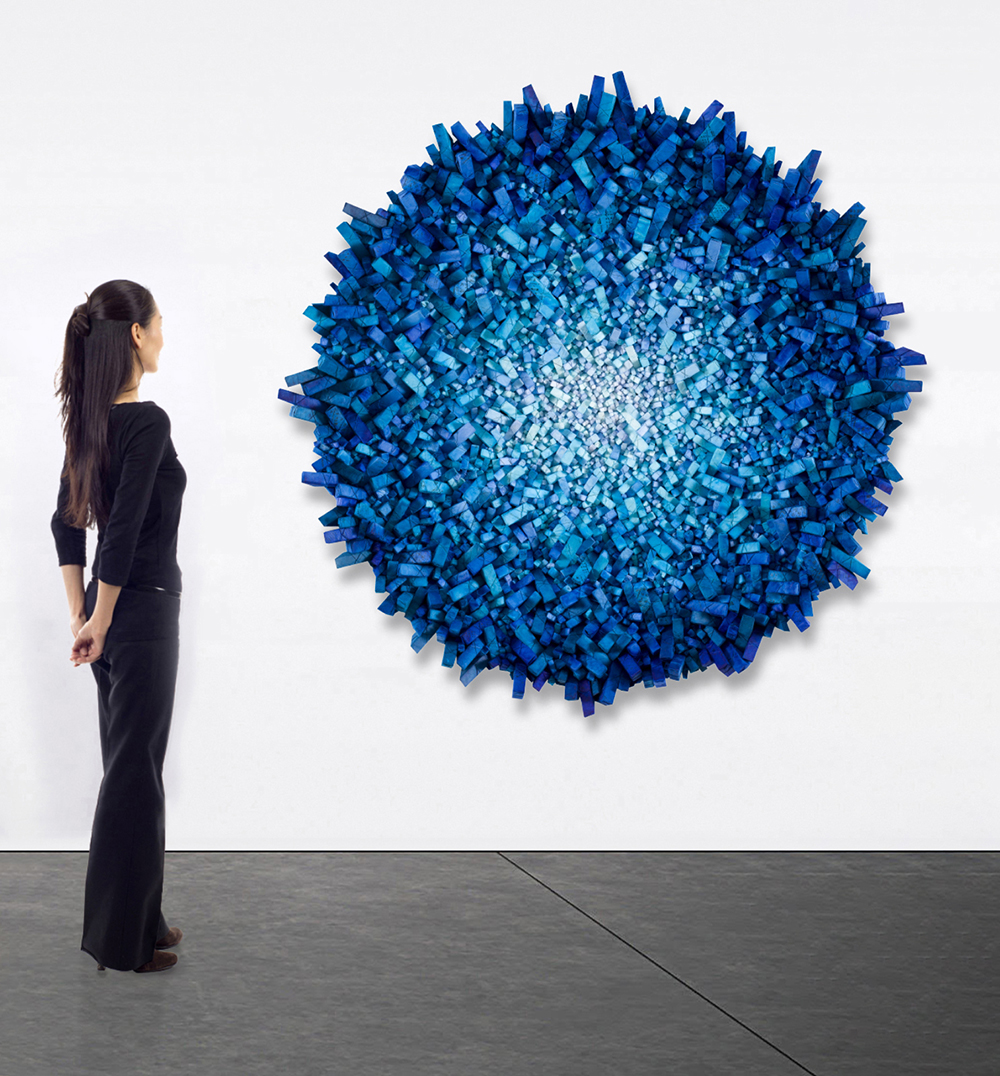
Viewing Room
CONTEMPORARY ISTANBUL
For this year's edition of Contemporary Istanbul, Opera Gallery is showcasing a selection of its
Contemporary program promoting dialogue across disciplines and highlighting varied perspectives.
This online presentation features works by 11 artists from different cultures and experiences: Fernando Botero, Manolo Valdés, Cho Sung-Hee, Andy Denzler, Reza Derakshani, Seo Young-Deok, Lita Cabellut, Anthony James, Julian Opie, Nick Gentry and Chun Kwang-Young.
This online presentation features works by 11 artists from different cultures and experiences: Fernando Botero, Manolo Valdés, Cho Sung-Hee, Andy Denzler, Reza Derakshani, Seo Young-Deok, Lita Cabellut, Anthony James, Julian Opie, Nick Gentry and Chun Kwang-Young.

Fernando Botero
Lawyer and Secretary2010
Oil on canvas
206 x 129 cm - 81.1 x 50.8 in
Colombian artist Fernando Botero is best known for his distinctive style of smooth inflated shapes
with
unexpected shifts in scale, which reflects the artist's constant search to give volume presence and
reality.
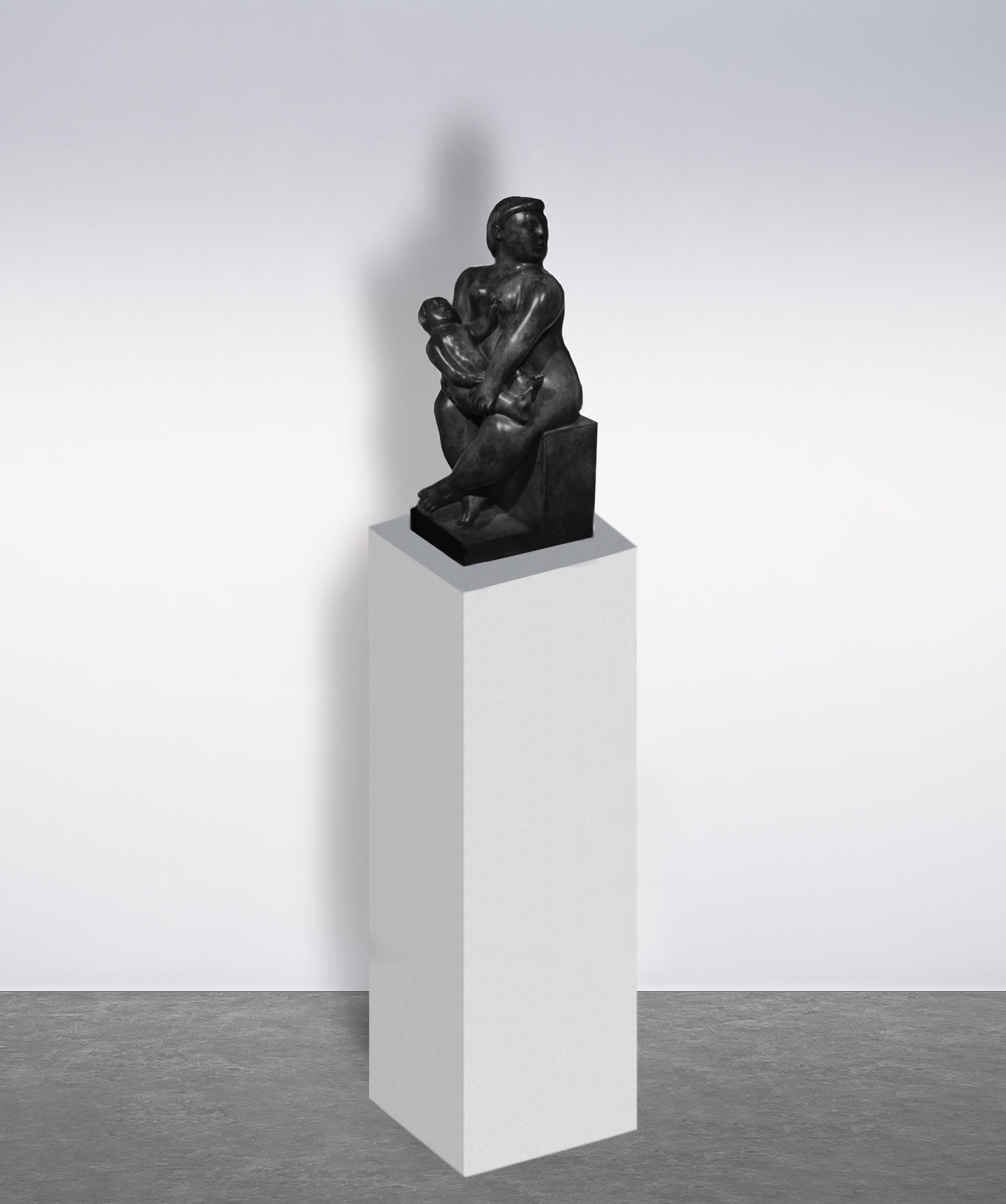
Fernando Botero
Maternita2003
Bronze
48,3 x 20,3 x 20,3 cm - 19 x 8 x 8 in

Spanish artist Manolo Valdés has developed an individual style that reviews History without detracting
from
the original subject. Quoting figures from well-known works of art by old masters such as Velázquez,
Rembrandt, Rubens, and Fra Angelico, as well as twentieth-century masters such as Matisse, Picasso, and
Lichtenstein, Valdés revitalises these familiar images by taking them out of their original context.
Through
his treatment of the material as well as his feeling for composition and effect, he manages to make each
motif his own.

MANOLO VALDÉS
Retrato con Fondo Naranja2020
Mixed media
165,1 x 177,8 cm - 65 x 70 in
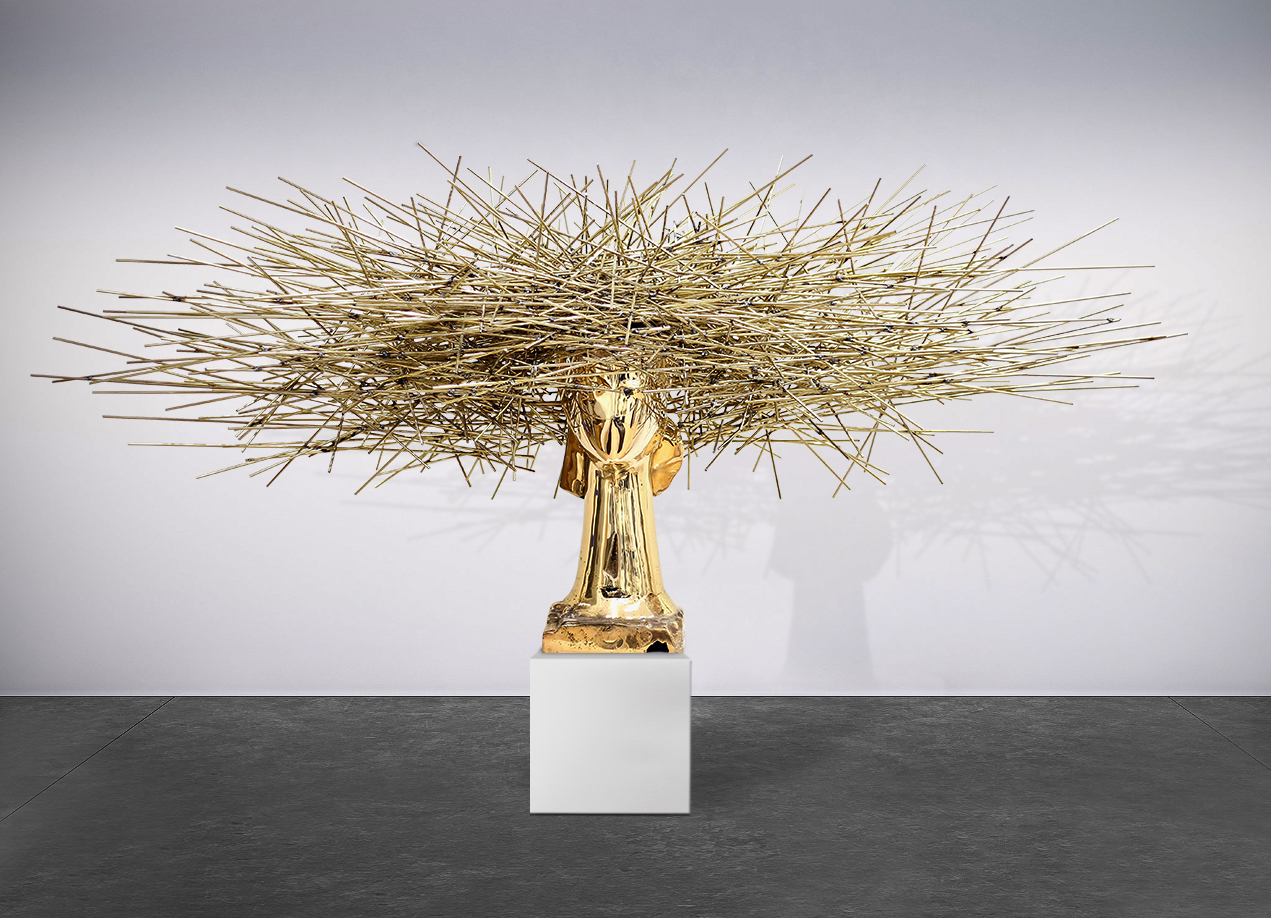
MANOLO VALDÉS
Clio Dorada2018
Bronze with gold patina and steel wires
114 x 255 x 90 cm - 44.9 x 100.4 x 35.4 in

Korean artist Cho Sung-Hee successfully combines a traditional Korean sensibility with her unique vision
and
personal narrative. Her works explore the complex relationship between colour and texture through a
labour
intensive, time-consuming process. In constructing the surface of her works, she uses a collage method
in
which many circles are hand-cut or gently torn from traditional
hanji paper, then layered with oil pigments and placed one atop another.

Cho Sung-Hee
Galaxy2014
Korean mulberry tree paper (hanji) and oil on canvas
162,2 x 130,3 cm - 63.9 x 51.3 in

MANOLO VALDÉS
Mariposas Azules2017
Polychromated bronze
42 x 70 x 17 cm - 16.5 x 27.6 x 6.7 in

MANOLO VALDÉS
Perfil I2017
Collages
170,2 x 119,4 cm - 67 x 47 in

Swiss artist Andy Denzler has created a signature style encompassing bands of pigment that alternate
between
static, thick marks and blurred, flowing sweeps. The human figure remains at the core of his
explorations,
courting the viewer's memories, and leaving him with a vague gnawing that he has missed something lying
just
beneath the surface. Perception and distortion are prominent and powerful traits of Denzler's practice.
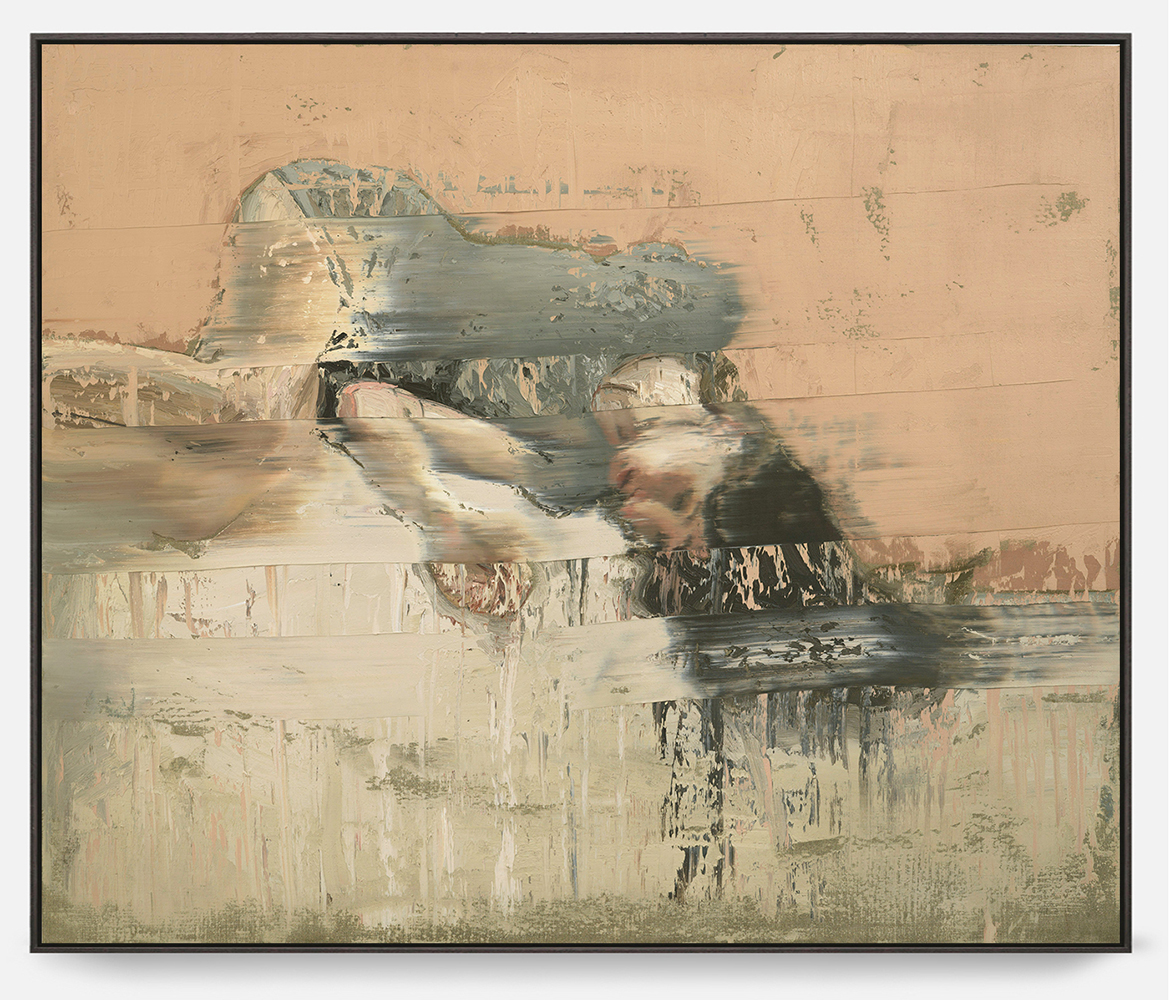
Andy Denzler
Fractured III2020
Oil on canvas
150 x 180 cm - 59.1 x 70.9 in
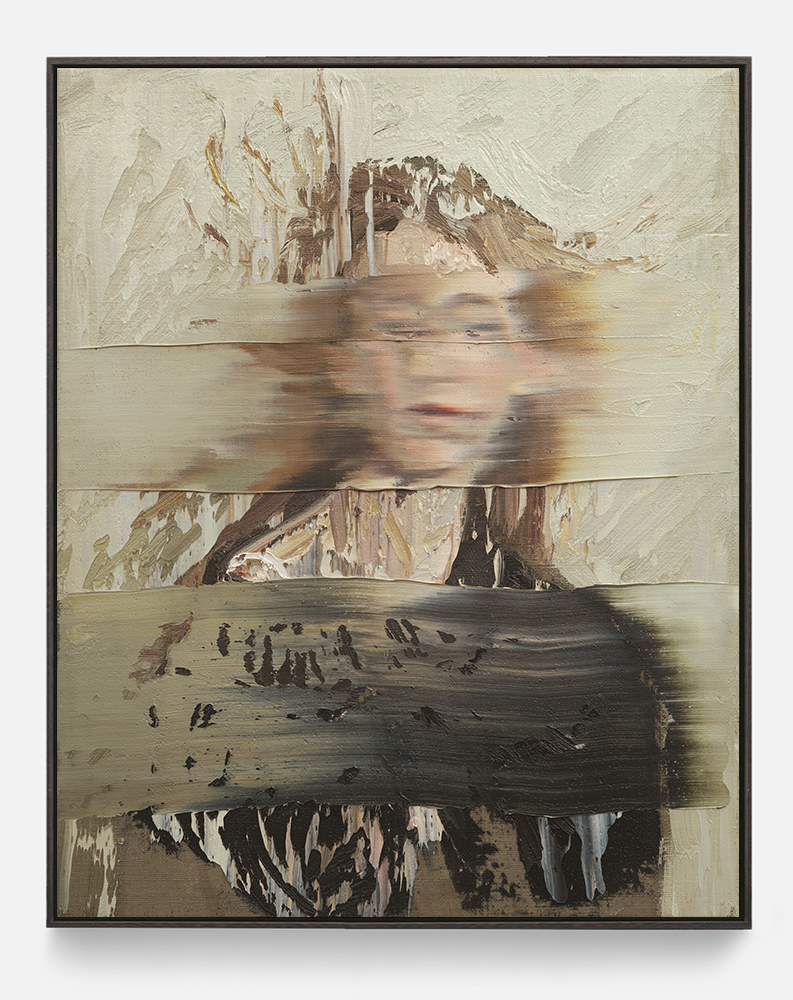
Andy Denzler
Study for Venus in Venetian Blonde2020
Oil on canvas
50 x 40 cm - 19.7 x 15.7 in

Iranian artist Reza Derakshani builds up the luminous, textured surfaces of his paintings with a
base of
roof tar, after which he applies layers of colour and other materials such as gold, silver, enamel,
and
sand. Blending abstract and figurative elements from both Western and Eastern cultures, he creates
an
idiosyncratic œuvre at the confluence of civilisations.
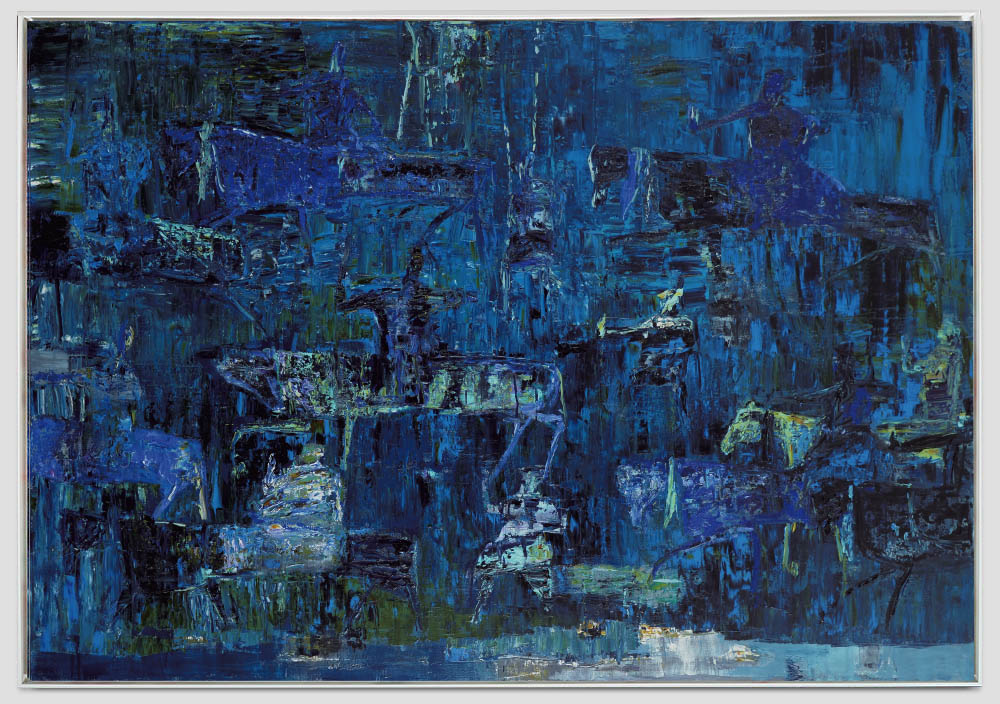
Reza Derakshani
Night Hunt2019
Oil on canvas
140 x 200 cm - 55.1 x 78.7 in
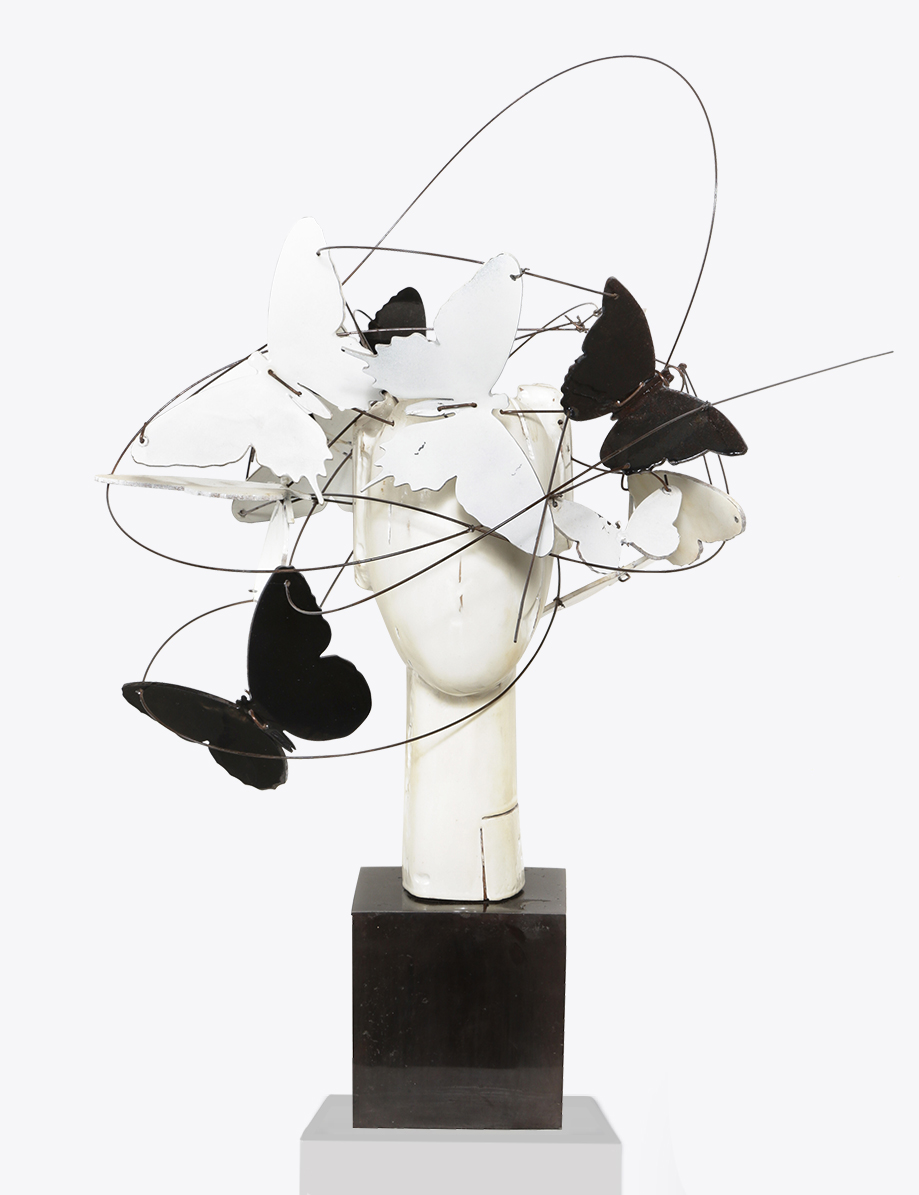
Manolo Valdés
Mariposas Blancas y Negras2020
Polychromated wood and iron
62,2 x 48,3 x 43,2 cm - 24.5 x 19 x 17 in
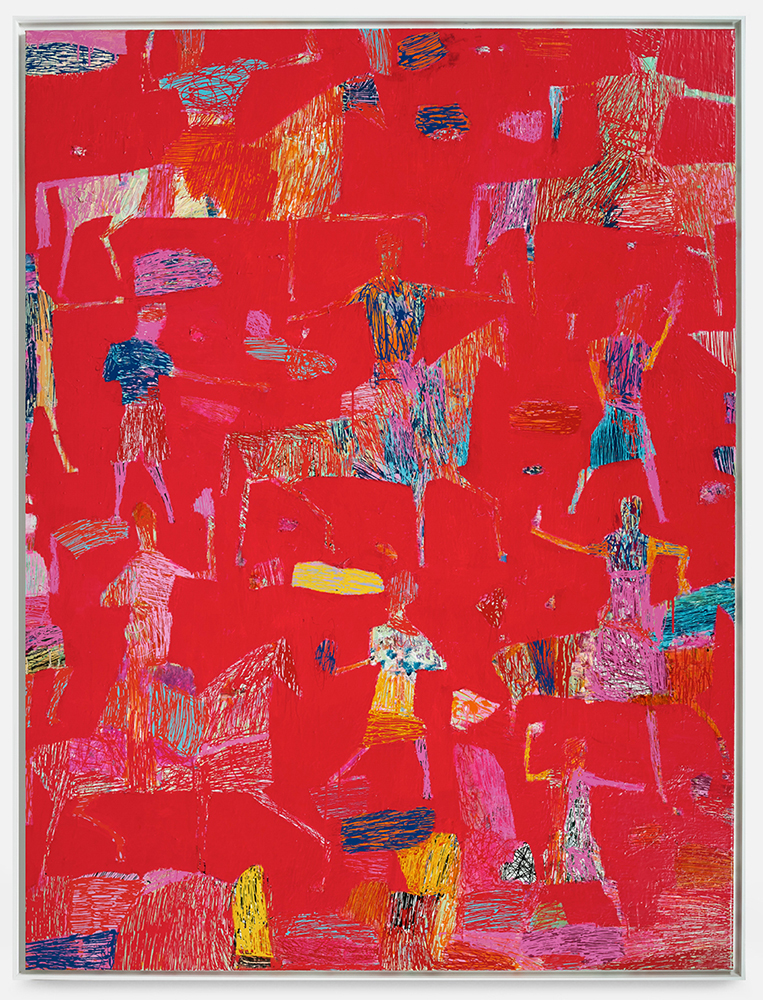
Reza Derakshani
Red Rain Hunt2019
Oil on canvas
200 x 150 cm - 78.7 x 59.1 in

Spanish painter Lita Cabellut has developed a contemporary variation of the classic fresco
technique and
a
recognisable personal palette style that awaken the viewer's senses. This portrait, endowed with
great
psychological potency captures the raw essence or the soul of its subject and exudes energy,
beauty and
passion.

MANOLO VALDÉS
Infanta Margarita2019
Aluminium
30,5 x 20,3 x 15,2 cm - 12 x 8 x 6 in
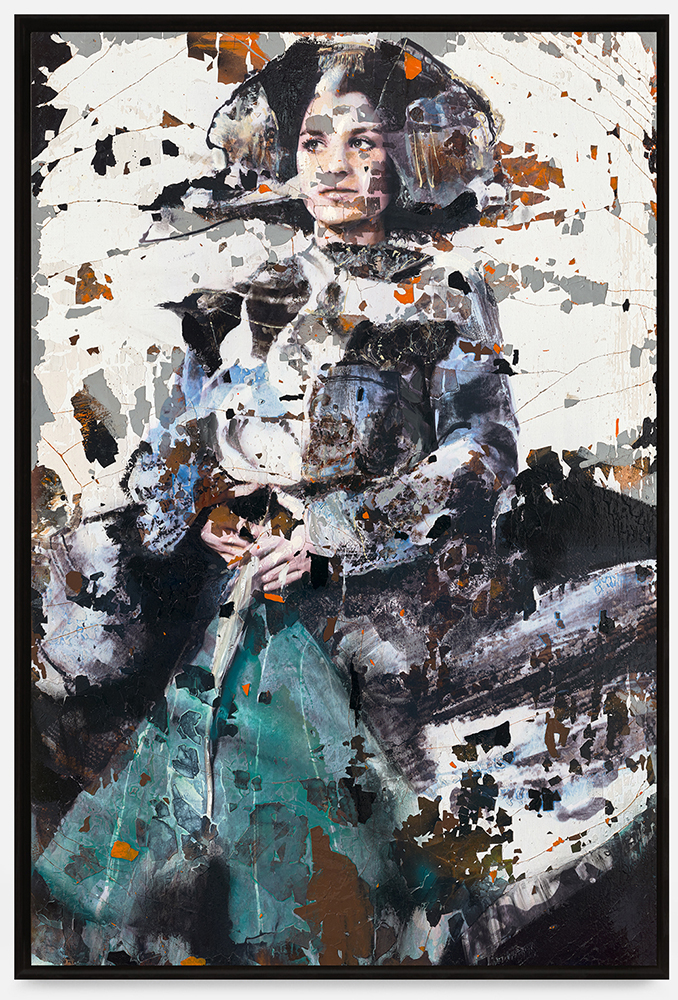
Lita Cabellut
Te Recuerdo Como Ayer2020
Mixed media on canvas
215 x 145 cm - 84.6 x 57.1 in
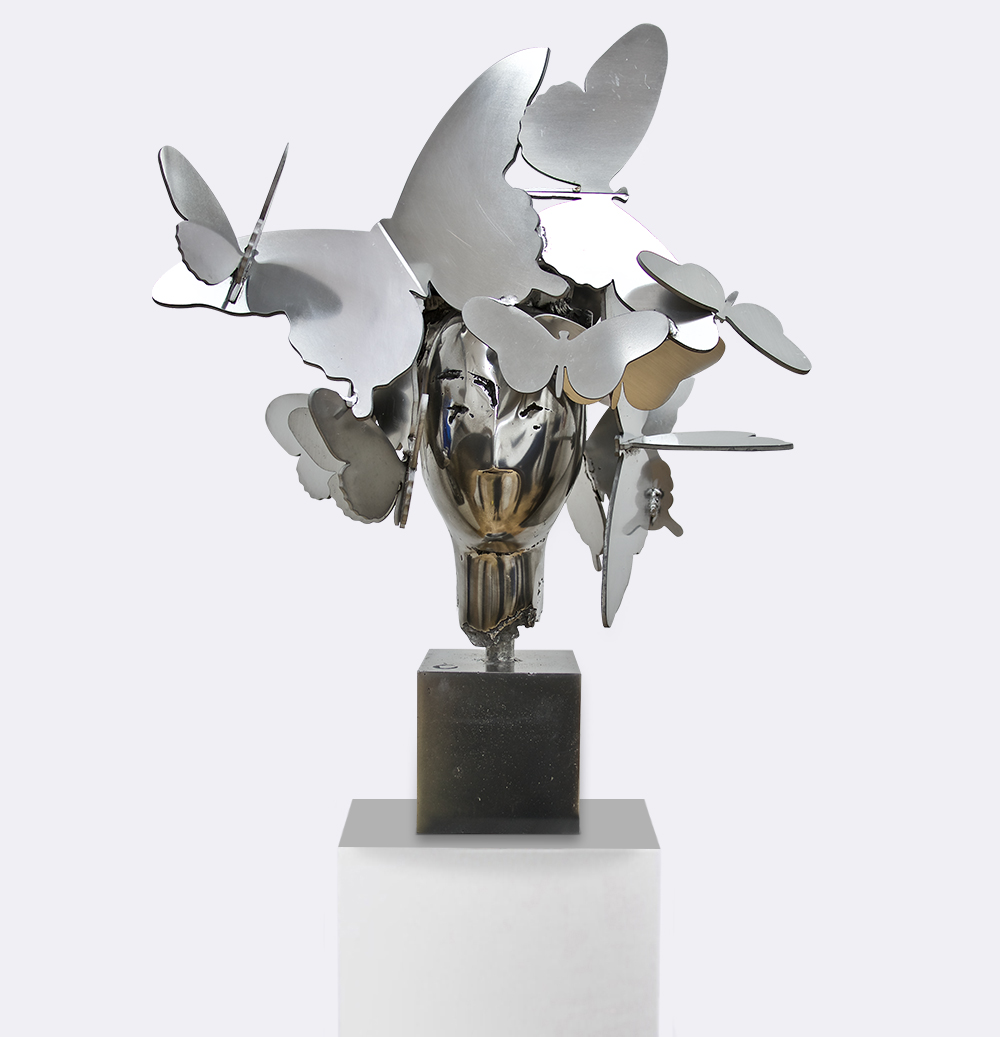
Manolo Valdés
Asteria2020
Aluminium
76,2 x 61 x 48,3 cm - 30 x 24 x 19 in
Mesmerising and energetic, Anthony James's work gestures towards the theatricality of
minimalism and
formalism with a focus on materiality, alchemy, and a deep respect for light and space. The
artist
manages
to translate the notion of infinity into art through his awe-inspiring sculptures.
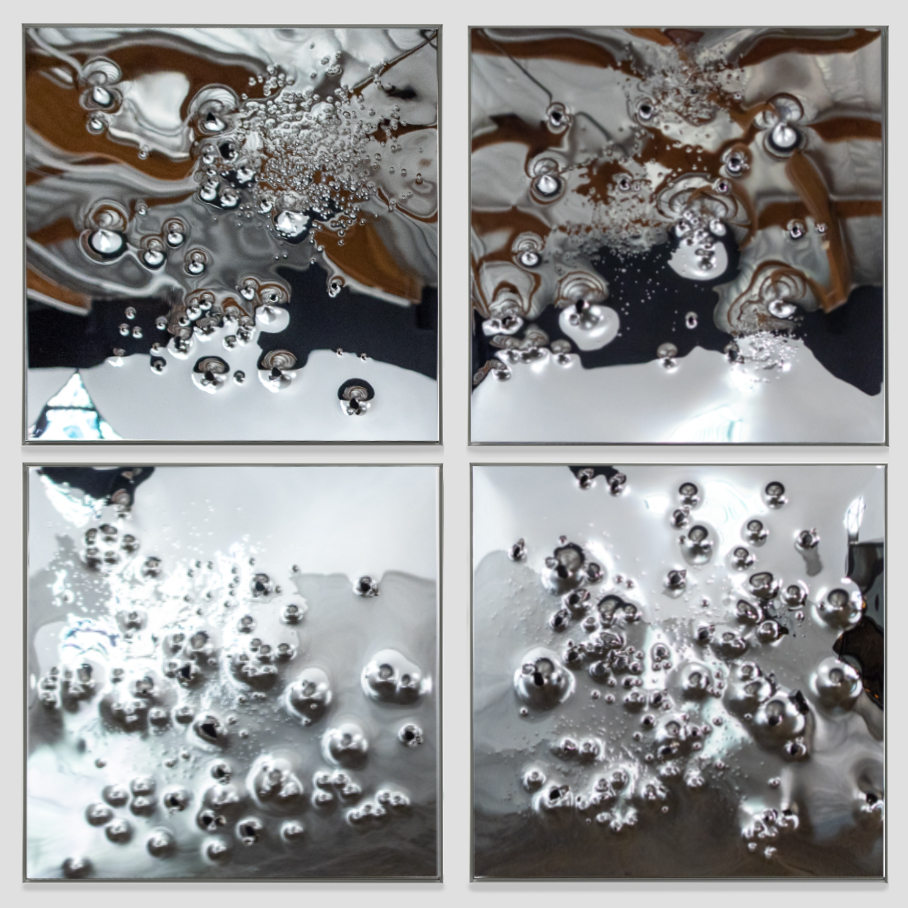
Anthony James
40" Bullet Painting2020
Polished stainless steel
101.6 x 101.6 cm - 40 x 40 in (each)

Anthony James
Crystal 0012020
Stainless steel, specialised glass, LED
245,1 x 116,8 x 120,7 cm - 96.5 x 46 x 47.5 in

Anthony James
34" Icosahdron (Black Nickel)2020
Steel, specialised glass, LED, Black Nickel finish
86,4 x 86,4 x 86,4 cm - 34 x 34 x 34 in

Always exploring different techniques, both cutting edge and ancient, British artist Julian
Opie plays
with
ways of seeing through reinterpreting the vocabulary of everyday life. Minimal and linear,
his reductive
style evokes both a visual and spatial experience of the world around us.
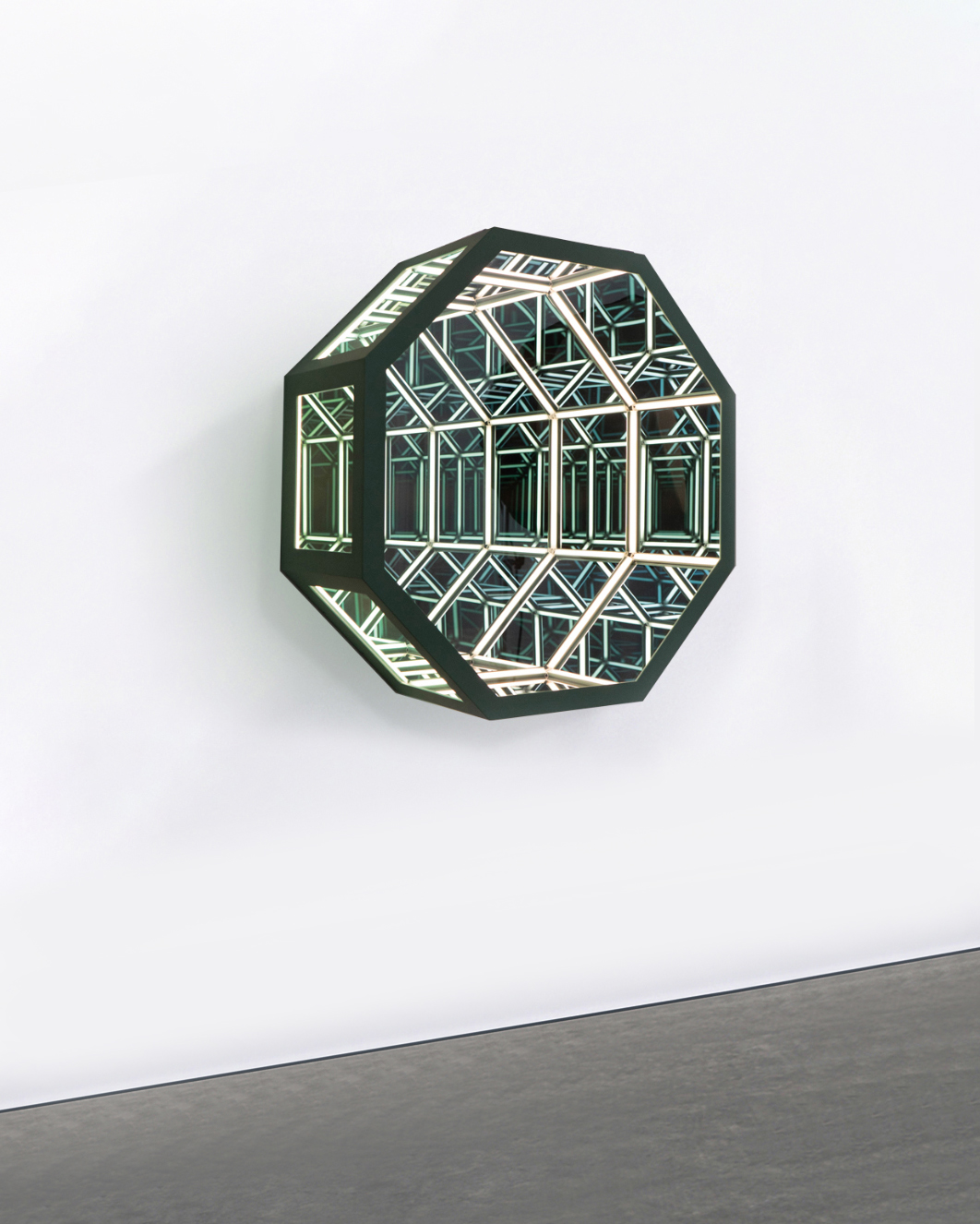
Anthony James
32“ Wall Portal (Aged Copper)2020
Steel, specialised glass, LED, Aged Copper finish
81,3 x 81,3 cm - 32 x 32 in

Julian Opie
Blue Umbrella2014
Vinyl on wooden strechter
246,1 x 138,1 cm - 96.9 x 54.4 in

Nick Gentry and Seo Young-Deok artworks explore the relationship between humans and their
over
industrialised environment. Korean artist Seo Young-Deok illustrates this connection with
his
representations of the human body using welded chains taken from industrial machinery and
bicycles.
British
painter Nick Gentry evokes today's consumerism by creating portraits using outdated computer
floppy
discs.

Seo Young-Deok
Meditation 3992019
Stainless chain
121 x 87 x 104 cm - 47.6 x 34.3 40.9 in

Nick Gentry
Master2020
Oil and used computer disks on wood
122 x 81 cm - 48 x 31.9 in
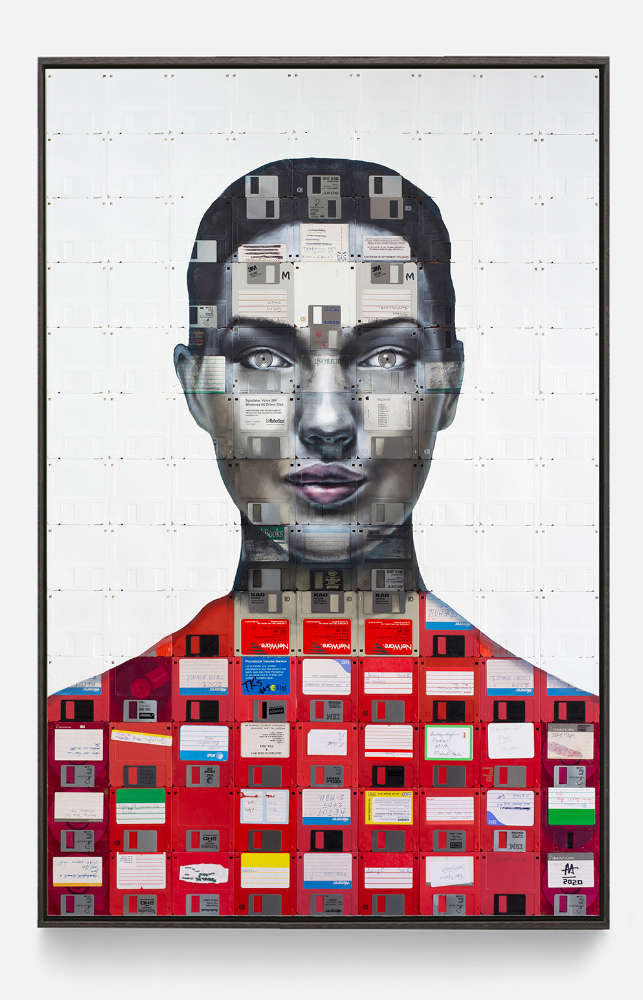
Nitck Gentry
Configuration 12020
Oil and used computer disks on wood
122 x 81cm - 48 x 31.9 in

The textural, crystalline paper wall sculpture by Korean artist Chun Kwang-Young is from
the Aggregation series for which the artist is best
known. This
sculptural composition is created from a myriad of small shapes wrapped in hand dyed old
book pages,
printed
in the traditional manner on Korea's celebrated mulberry-pulp paper, called hanji. Chun likens the wrapped shapes to cells or
units of
information, and sees analogies to both chemistry and the human condition in the ways that
the shapes
interact physically: sometimes meshing, sometimes clashing.
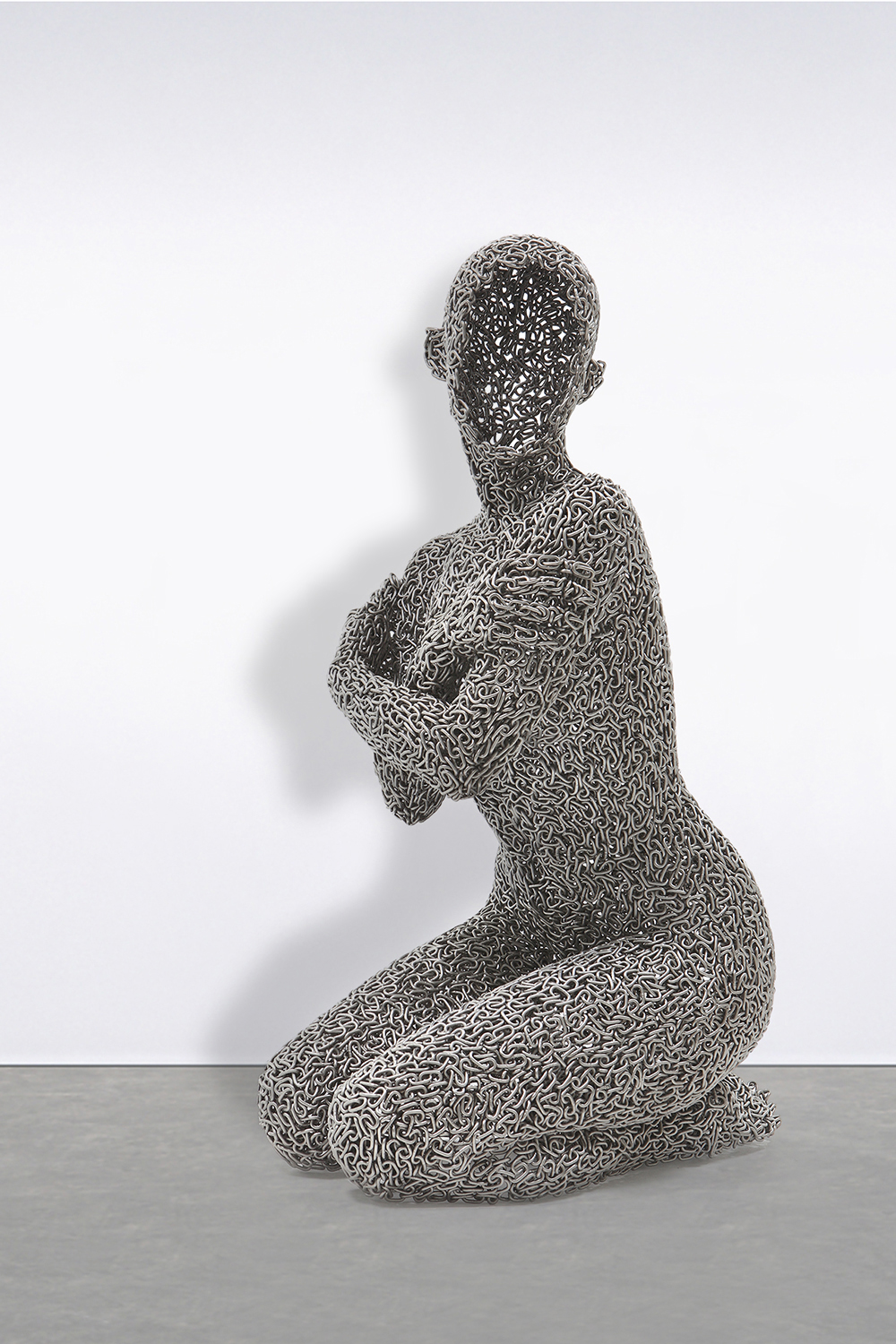
Seo Young-Deok
Anguish 182013
Iron chain
95 x 45 x 70 cm - 37.4 x 17.7 x 27.6 in
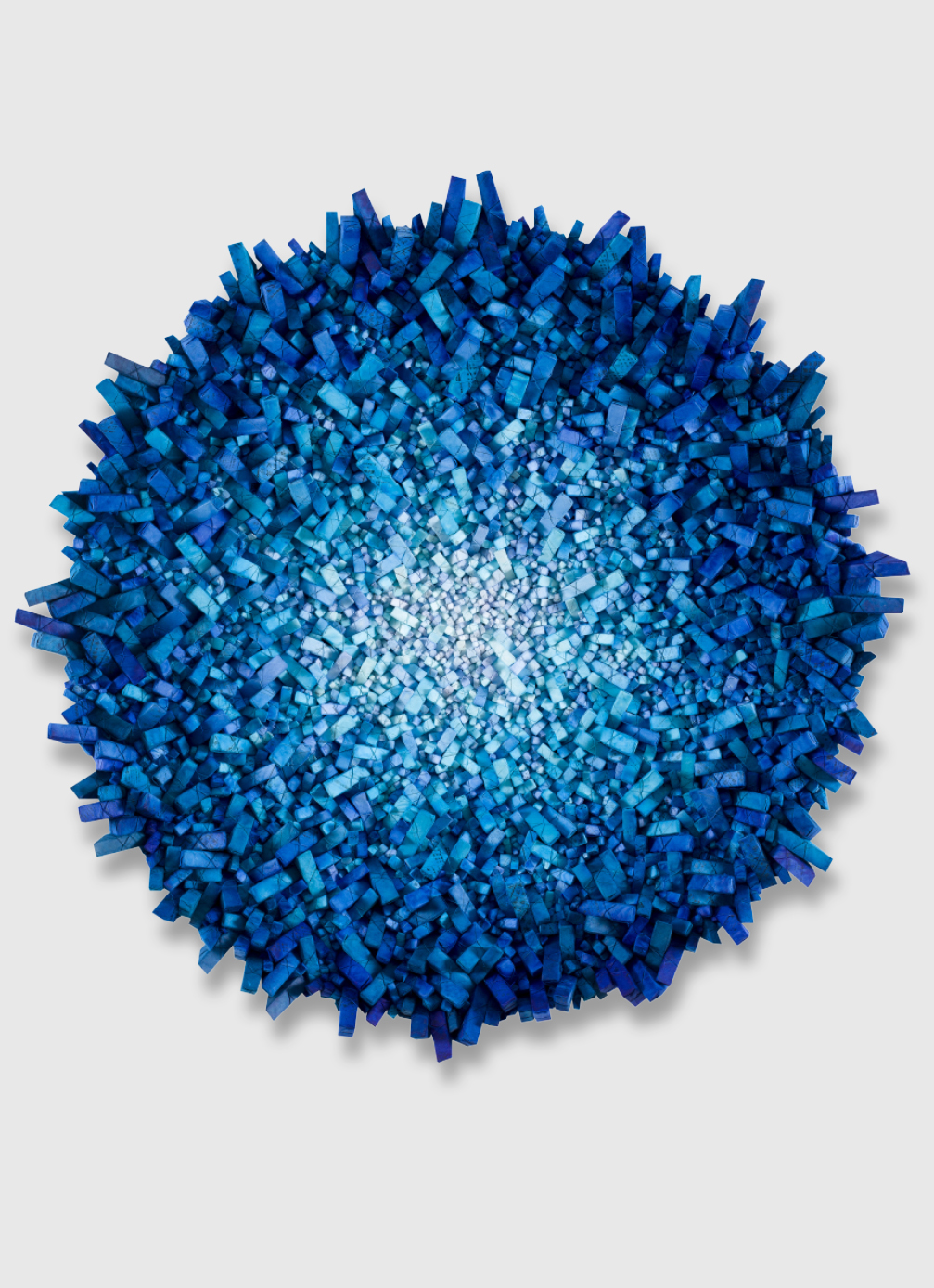
Chun Kwang-Young
Aggregation17-SE065 (Star21)2017
Mixed media with Korean mulberry tree paper (hanji)
160 x 160 cm - 63 x 63 in

